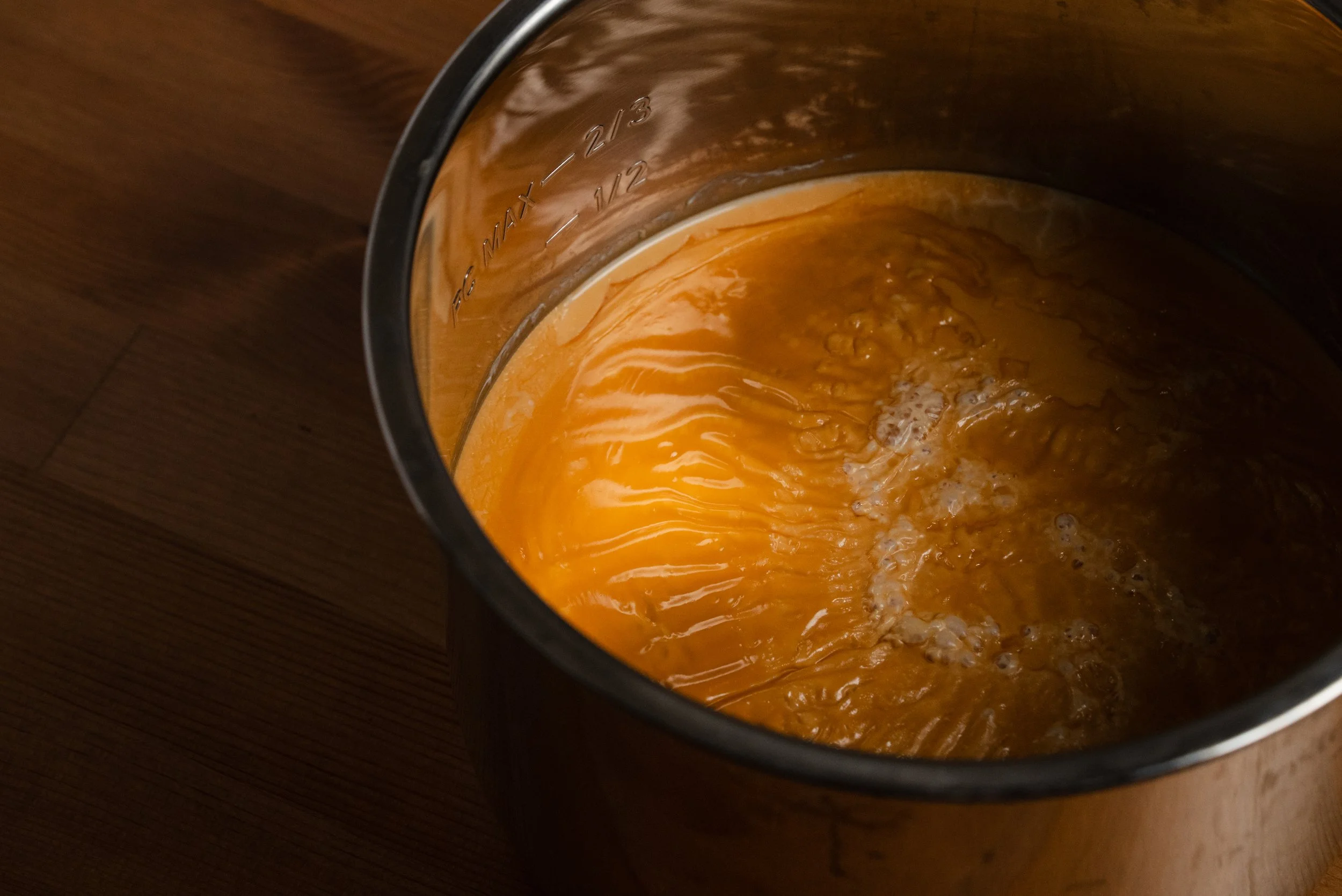What is Fermentation?
The art of letting microorganisms do the work—under your control
by Denis Pashkov
The Essence of Fermentation
Fermentation is a controlled biological process where microorganisms—primarily bacteria, yeasts, and sometimes molds—transform sugars and other compounds into acids, alcohols, or gases.
In culinary practice, it’s the intersection of biology and flavor: the point where science meets craft. Every loaf of sourdough, miso paste, or kombucha is the result of invisible communities of microbes performing their specialized roles.
At its core, fermentation is the metabolic breakdown of sugars in the absence of oxygen.
Microbes use enzymes to convert these sugars into energy, releasing byproducts that define the outcome:
Lactic acid → in yogurts, kimchi, and sourdough (acidic, tangy flavors)
Ethanol and CO₂ → in beer, wine, and bread (alcoholic or leavened results)
Acetic acid → in vinegars and kombucha (sharp, vinegar-like acidity)
Different organisms drive these transformations depending on the environment we provide.
Types of Fermentation
1. LAB-Driven Fermentation (Lactic Acid Bacteria)
Lactic acid bacteria (LAB)—such as Lactobacillus, Leuconostoc, and Pediococcus—convert sugars into lactic acid.
This type of fermentation dominates when conditions are slightly acidic (pH 4–6) and moderate in temperature (around 18–25°C).
The result: preserved foods with bright acidity and layered umami, like sauerkraut, kefir, or sourdough starter.
2. Yeast Fermentation
Yeasts, particularly Saccharomyces cerevisiae, thrive in sweeter environments and moderate warmth (22–28°C).
They convert sugars into alcohol and carbon dioxide—perfect for bread rise, wine making, or beer fermentation.
When combined with bacteria, yeast creates complex dual fermentations such as kombucha or sour beer.
3. Acetic Acid Fermentation
Here, Acetobacter species oxidize alcohol into acetic acid in the presence of oxygen.
Typical temperature range: 25–30°C.
This is how wine becomes vinegar or kombucha develops its sharp edge after secondary fermentation.
4. Enzymatic Fermentation (Koji & Beyond)
Filamentous fungi like Aspergillus oryzae (koji mold) don’t acidify but instead release enzymes that break starches and proteins into sugars and amino acids (read umami).
This process generates natural sweetness and depth, forming the foundation of soy sauce, miso, and sake.
Koji operates best in warm, humid conditions around 30–35°C.
Microbial Ecology and Control
Microbes never act alone. They coexist, compete, and cooperate in communities.
What thrives depends entirely on the environment you create—temperature, pH, oxygen, and available nutrients.
This is why fermentation is as much about control as it is about patience. It’s about manipulating and controlling environmental conditions to achieve specific outcomes.
Think of it like this:
Imagine three people in a room—a guitarist, a DJ, and a pool player. All are talented, but only one can perform if you hand them a guitar. The others remain silent.
In fermentation, your “guitar” is the environment. By adjusting conditions—say, lowering pH and maintaining 22°C—you let LAB “play,” while suppressing unwanted yeasts or molds.
That’s how you ensure consistency and safety while letting flavor complexity develop naturally.
Fermentation as a Flavor and Profit Driver
Fermentation doesn’t just preserve—it creates value.
Lacto-ferments provide acidity that can replace citrus in cocktails or dressings, reducing ingredient waste.
Koji or enzymatic ferments add natural sweetness and umami, cutting down on refined sugar or costly flavor enhancers.
Even byproducts—like whey, vinegar mothers, or spent koji—can be repurposed into syrups, garnishes, marinades, or bases, keeping margins healthy and waste minimal.
In Summary
Fermentation is a process of controlled transformation.
We provide the right conditions—temperature, pH, time—and microorganisms do the work, converting simple ingredients into preserved, flavorful, and often more nutritious forms.
Understanding these microbial dynamics gives chefs, bartenders, and food innovators a toolkit for consistency, creativity, and sustainability.
In other words: control the environment, and the right microbes will perform the music you want to hear.
